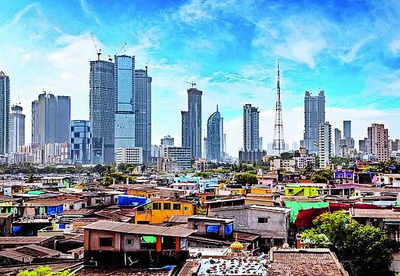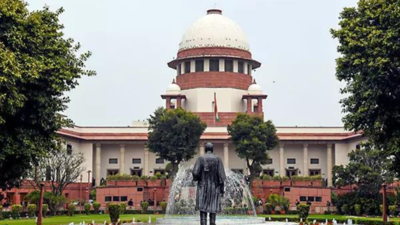
File photo MUMBAI: Land covered by slums in Mumbai region declined 8.6%, or 4.1 sq km, between 2005 and 2022, a new study has revealed.
That’s an area approximately 4.5 times the size of Mahalaxmi racecourse. The study found the area covered by slums in estuarial Mumbai — Greater Mumbai and Thane city — fell from 47.
7 sq km in 2005 to 43.6 sq km in 2022. This overall decline masks a more complex dynamic, though: some bastis grew larger, others became smaller, and a few vanished over the two decades.
Slums shrank in some places by a total of 10.2 sq km and grew in others by 6.1 sq km, it found.
Many slums also became more closely packed, or dense, after 2010. “While slums grew in area in the first decade, they densified in the second,” says John Friesen, lead author of the study. The findings show that slums should not be seen “as areas of uncontrolled urban expansion but as integral components of the city, constantly undergoing deconstruction and reconstruction”, researchers say.
For the study, Friesen and others used high-resolution satellite imagery and other data to map changes in land occupied by slum structures across the Mumbai region between 2005 and 2022. With total land area covering almost 600 sq km (including the national park), the reduction brought down the proportion of land occupied by slums in Mumbai region from 8% in 2005 to 7.3% in 2022.
Meanwhile, on the mainland, including Navi Mumbai and parts of Mumbra, slum area grew by almost 35%, increasing from 12 sq km to 16.1 sq km between 2005-2022. Researchers also looked at the spatial density of slums , which they based on the distance between structures.
Slum areas that had less than 10 metres distance between structures were categorised as high density, while those with gaps of up to 30 metres were considered low density. Across the region, researchers found the number of low-density slums doubled from 294 to 502 between 2005 and 2010, before dropping back to 266 by 2022. Conversely, the number of tightly packed, or high-density, slums declined slightly before 2010, from 988 to 964, before increasing to 1,359 by 2022.
These findings seem to support local observations that slums in the city have grown vertically rather than horizontally in the past decade, and that any sprawl in informal settlements has shifted to outer areas of the metropolitan region. Interestingly, the study also found that slums close to waterbodies and railways reduced over the 17-year period. Slum area within 100 metres of waterbodies declined by 7%, or 1.
8 sq km, between 2005 and 2022, and by 11.5% or 3.7 sq km within 100 metres of railway lines.
This decline needs to be studied further, Friesen said, noting that the results might be different if they expanded the 100-metre buffer zone to 200 metres. The slum area beyond 100 metres near waterbodies and railways increased, the study found..














